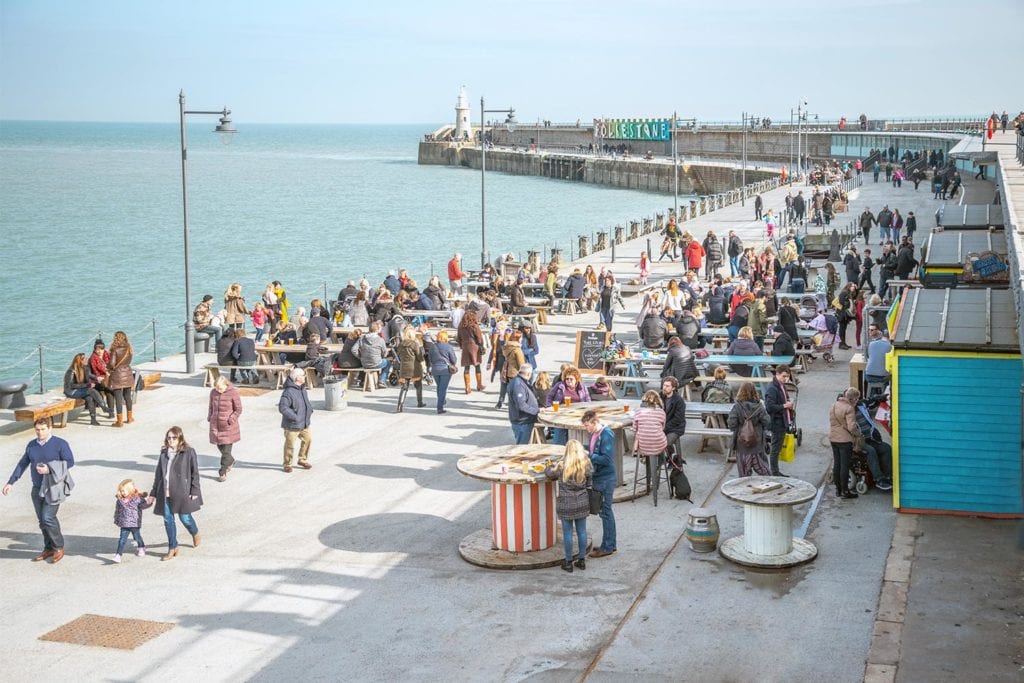Will the assets of our urban fabric survive the Covid-19 pandemic?
Massive socioeconomic upheaval puts components of our urban fabric at heightened risk of becoming stranded assets.
We live in a rapidly evolving world where interrelated drivers for change are combining to create long-term consequences for the built environment. More specifically, these six drivers comprise regulatory, cultural, physical, cultural, microeconomic and macroeconomic levers. Assets that cannot be easily adapted within such a dynamic environment are at increasing risk of becoming stranded.
The term “stranded assets” is often used in connection with the fossil fuel industry. It is, however, also relevant in understanding certain risks posed to our cities. Stranded assets in this context are buildings, infrastructure and land that either lose value or become redundant for their existing purpose. When an asset becomes stranded, the structural changes affecting it will result in a long-term impact that is significant or irreversible. Subsequently, transformation of the asset is required.
For many years, Buro Happold has been helping to reimagine infrastructure and real estate assets that have become stranded. Success stories include consultancy work to reinvigorate the Erie Canal in New York State and transforming Kent’s Folkestone Harbour into a vibrant seaside destination. We support asset owners to develop and implement forward-looking proposals underpinned by sound economic, social and environmental strategies.

The Covid-19 pandemic brings the problem of asset stranding into sharp focus. Actions being taken by governments and public health authorities around the world demonstrate how quickly a universal shock can dramatically influence our assets with far-reaching effects for owners and occupiers.
Some of our urban fabric has become temporarily unusable, such as cultural facilities that are currently unable to open. Elsewhere, the pandemic is exacerbating existing weaknesses within certain sectors or pushing people into new habits that could permanently strand assets, such as retail centres that are seeing trade move online. So, though we have seen the volume of UK retail sales in April 2020 fall by a record 18.1%, online retailers have reported the highest proportions of increased turnover out of any retailers – 54.5% of online businesses recorded an increase in turnover while 41% experienced a decrease (ONS Monthly Business Survey Retail Sales Inquiry April 2020).

Away from the economy, more positive effects have been felt. Many people have enjoyed a better work-life balance with less commuting and more family time; albeit temporarily, the environment has benefited from drastically reduced travel and energy demands with positive gains in air quality and reductions in carbon emissions.
This pandemic provides us with an opportunity to evaluate the risk of assets becoming stranded, make them more resilient or consider transformation where stranding has already occurred. We apply our stranded assets evaluation approach to considering Covid-19’s impacts. Assessed against the six drivers for change, it is clear there are a number of unique pressures arising from Covid-19 as shown in the table below.
| Regulatory | Introduction of emergency legislation Restrictions on business operations Stimulus packages implemented |
| Physical | Improvements in air quality Reduction in carbon emissions |
| Cultural | Restrictions on movement Enforced changes of behaviours |
| Technological | Acceleration of the shift to online (e.g. home working and online shopping) Introduction of tracking apps |
| Macroeconomic | Disruption to global supply chains Sharp increase in unemployment FDI downturn / reversal |
| Microeconomic | Spike in demand for certain products Squeeze on consumer spending |
The effects* of the pandemic are playing out across all sectors of the economy. Beyond the short term, some impacts will persist as we get to grips with a transitional way of life and the requirement to maintain social distancing even as lockdown eases. But what if there is a second wave? When will a vaccine be developed? What if a vaccine is never found? As we move into the medium and long term, what happens to assets will depend on getting answers to a variety of questions:
- How quickly will the economy recover?
- What shape will the recovery take, and which sectors will be last to bounce back?
- What sort of stimulus packages will the government put in place and how will they be targeted in geographic and sector terms?
- How will investors and insurers assess risk in the medium to long term?
- Which consumer habits will have changed and will they persist?
- What changes in societal norms will endure?
- Will the pandemic engender a desire for a complete rethink of how we live, work and socialise?
These are the questions that many of our city authorities, businesses and infrastructure providers are currently grappling with. The challenge is that multiple possible scenarios could play out and there are many complex interrelationships between the drivers for change that will affect our urban assets.
As we endeavour to make our cities and infrastructure more resilient to sudden change, it is vital that we consider not only the risks of asset stranding but also the opportunities that such unexpected shifts bring. To do this, evaluation of risks must be multidimensional and incorporate a range of possible scenarios.
The response to Covid-19 demonstrates that we can quickly adapt our cities, assets and way of life to derive some hugely positive benefits. By evaluating and planning for the potential stranding of assets, we can transform them to deliver greater resilience to change. This will benefit asset owners and our society as a whole.
Impacts of Covid-19 by sector
Retail
Short term impacts (0-12 months)
- Increase in demand in online shopping
- Offline services shift online
- Restrictions on how shops operate, and consumers can shop
- Reduced product lines
Medium term impacts (1-3 years)
- More e-commerce
- Tactical urbanism to adapt high streets for Covid and changing modal split
- Acceleration of showrooming & click and collect
Long term impacts (3+ years)
- Shopping behaviours permanently shifted for those previously reticent to shop online
- Less consumerist society
Potential actions for sector
- Further harnessing automation
- Repurposing of retail space for other uses
- Reconfiguration of the last mile distribution
- Dispersed collection points throughout urban areas
Commercial
Short term impacts (0-12 months)
- Office workers move to full working from home
- Face to face meetings curtailed
Medium term impacts (1-3 years)
- Greater home working, flexible working and agile working
- Housing decisions influenced by changing working patterns.
Long term impacts (3+ years)
- Shift in use of office space to support face to face meetings and group working
- More space in new dwellings to support home working.
Potential actions for sector
- Adapt offices as interaction hubs with no ‘fixed’ workstations
- Decentralised offices off centre to tap into desire for reduce commute
- Modular and flexible design for commercial buildings
Industrial
Short term impacts (0-12 months)
- Supply chains and markets disrupted
- Production shifted to new, or in demand items
- Operational changes to adjust to Covid including physical environment and shift patterns
- Economic impact of Covid leads to short term shutdowns and downscaling of operations.
Medium term impacts (1-3 years)
- Establish more diverse supply chains
- Increased investment in digitisation and automation of production and logistics
Long term impacts (3+ years)
- Shift to more localised production
- Companies forced to hold larger inventories of stock
Potential actions for sector
- Increase storage and warehousing capacity
- Increased need for manufacturing floorspace
Higher Education
Short term impacts (0-12 months)
- Teaching switched to online
- Loss of revenue from student accommodation and other related uses
- Research activities disrupted
Medium term impacts (1-3 years)
- Shift in demand from overseas students.
- Changes to capital programmes
Long term impacts (3+ years)
- Increased demand for online learning
- More regional or local focus to student population
Potential actions for sector
- More blended approach to learning (online lectures)
- Rationalise admin, teaching and lab space (remote workers)
- More automation to run utilise lab space remotely
Sport, Culture & Entertainment
Short term impacts (0-12 months)
- Unable to operate / trade
- Loss of match / event day revenue
- Use of online to maintain audience engagement
Medium term impacts (1-3 years)
- Potential reduced capacities due to health restrictions
- Transport risks influence audience patronage among Covid vulnerable groups
Long term impacts (3+ years)
- Risk of lock in of Covid behaviours
- Tourism related demand returns differently
Potential implications for sector
- Remodelling / re-planning of venues
- Maximise non match day / event day revenue streams through stadium or venue redesign / redevelopment
Transport & Aviation
Short term impacts (0-12 months)
- Hugely supressed demand due to travel restrictions
- Users avoiding public transport
- Disruption to method of operation and customer experience
Medium term impacts (1-3 years)
- Business and commuter travel demand does not bounce back to pre-Covid levels
- Greater barriers to international movement
Long term impacts (3+ years)
- Increased walking / cycling
- Permanent shifts in business and discretionary travel focus on quality interaction and experiences
Potential implications for sector
- Slow down or reconfiguration of airport expansion plans
- Re-planning of road space for walking and cycling
Healthcare
Short term impacts (0-12 months)
- Burn out of medical staff
- Shift to telemedical
- Health surveillance / tracking
- Reconfiguration of health facilities and staff to address Covid
Medium term impacts (1-3 years)
- Focus on healthcare for government funding
- Learning from Covid more flexible use of health facilities and staff responding to seasonal demand
- Localised production of pharmaceuticals and healthcare products
Long term impacts (3+ Years)
- Greater use of AI for detection helping to manage flow of patients
Potential implications for sector
- Increase in telemedical shifting the point of care to patient reducing space requirements in healthcare facilities
- Redesign hospitals / heath facilities to improve resilience to pandemics
Research & Development
Short term impacts (0-12 months)
- Restricted supply chain for materials
- Inability to continue research due to restrictions on accessing labs
- Caution on expansion for some companies (as venture capital funding recedes)
Medium term impacts (1-3 years)
- Private funding to return and government funding on research increasing (to £22bn annually)
- Increase in demand as offshored development projects return to guarantee domestic supply
- Increased investment in certain tech and life science and pharmaceutical sectors
- More agile testing and approval models developed for Covid lead to longer term changes.
Long term impacts (3+ Years)
- Sector to offer long term growth as a way out of recession
Potential implications for sector
- Increase in demand for R&D floorspace / facilities
- Further harness automation






